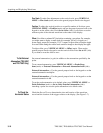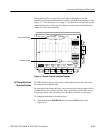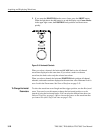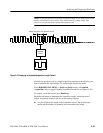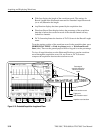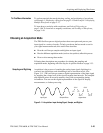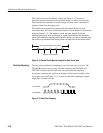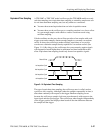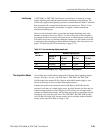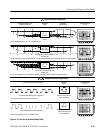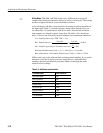
Acquiring and Displaying Waveforms
TDS 500C, TDS 600B, & TDS 700C User Manual
3–25
To perform tutorials that teach selecting, scaling, and positioning of waveforms,
see Example 1: Displaying a Waveform on page 2–13 and Example 2: Displaying
Multiple Waveforms on page 2–17.
To learn how to use delay with waveforms, see Delayed Triggering on
page 3–106. To learn how to magnify waveforms, see Zooming on Waveforms,
on page 3–49.
Choosing an Acquisition Mode
The TDS Oscilloscopes are digital products that can acquire and process your
input signal in a variety of modes. To help you choose the best mode to use for
your signal measurement task, this section first describes:
H How the oscilloscope samples and digitizes an input signal
H How the different acquisition modes (such as interpolation) affect this process
H How to select among these modes
Following these descriptions are procedures for selecting the sampling and
acquisition modes, beginning with Checking the Acquisition Readout on page 3–33.
Acquisition is the process of sampling the analog input signal, digitizing it to
convert it into digital data, and assembling it into a waveform record. (See
Figure 3–11.) The oscilloscope creates a digital representation of the input signal
by sampling the voltage level of the signal at regular time intervals. The sampled
and digitized points are stored in memory along with corresponding timing
information. You can use this digital representation of the signal for display,
measurements, or further processing.
Input Signal Sampled Points Digital Values
+5.0 V
–5.0 V
+5.0 V
–5.0 V
0 V 0 V 0 V 0 V
Figure 3–11: Acquisition: Input Analog Signal, Sample, and Digitize
To Find More Information
Sampling and Digitizing




